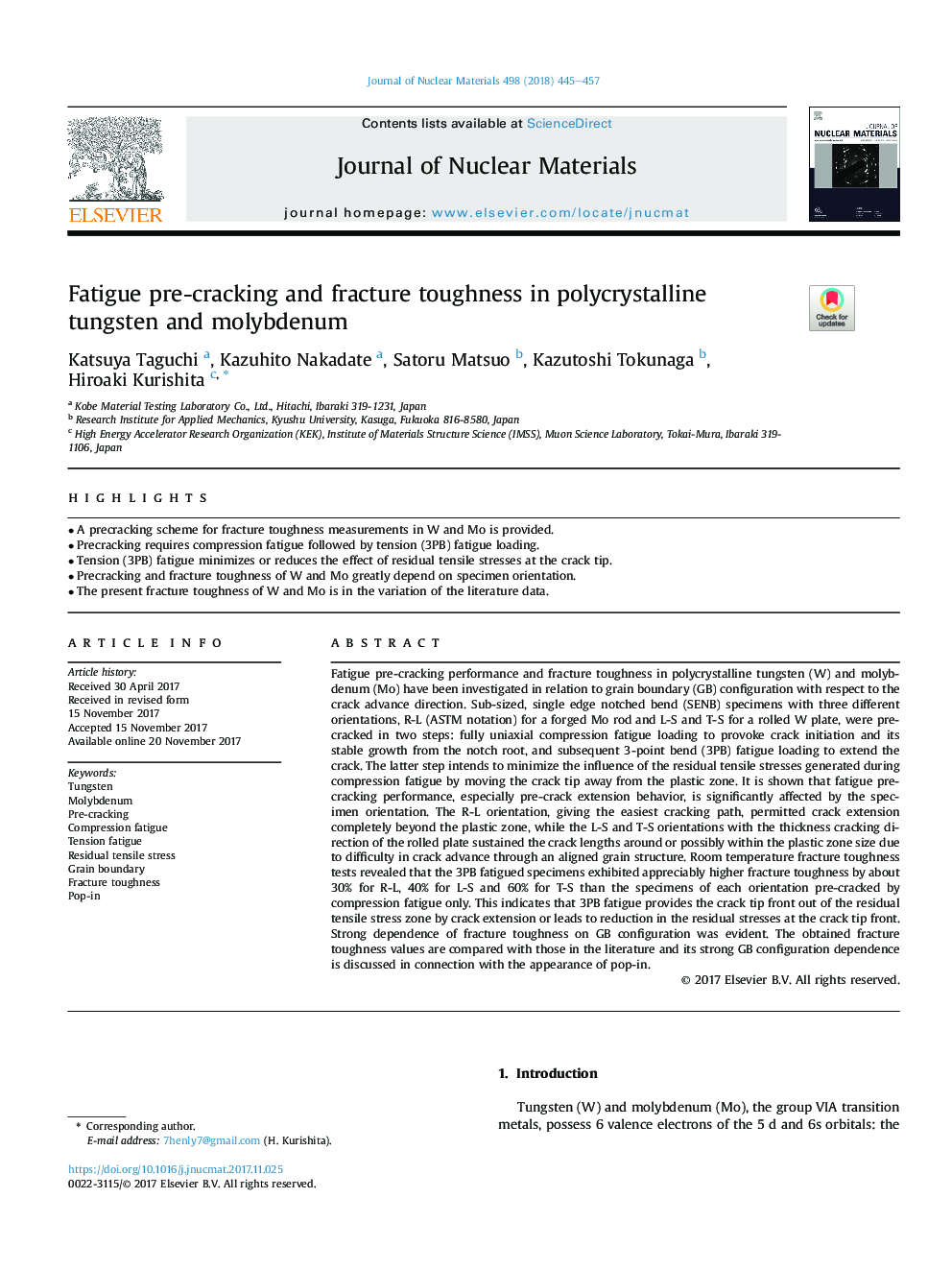| کد مقاله | کد نشریه | سال انتشار | مقاله انگلیسی | نسخه تمام متن |
|---|---|---|---|---|
| 7963570 | 1514148 | 2018 | 13 صفحه PDF | دانلود رایگان |
عنوان انگلیسی مقاله ISI
Fatigue pre-cracking and fracture toughness in polycrystalline tungsten and molybdenum
ترجمه فارسی عنوان
خستگی قبل از ترک خوردگی و چقرمگی شکست در تنگستن و مولیبدن پلی کریستالی
دانلود مقاله + سفارش ترجمه
دانلود مقاله ISI انگلیسی
رایگان برای ایرانیان
کلمات کلیدی
تنگستن، مولیبدن، قبل از ترک خوردن، خستگی فشرده، خستگی تنش، استرس کششی باقی مانده، مرز دانه، چقرمگی شکستگی، پاپ در
موضوعات مرتبط
مهندسی و علوم پایه
مهندسی انرژی
انرژی هسته ای و مهندسی
چکیده انگلیسی
Fatigue pre-cracking performance and fracture toughness in polycrystalline tungsten (W) and molybdenum (Mo) have been investigated in relation to grain boundary (GB) configuration with respect to the crack advance direction. Sub-sized, single edge notched bend (SENB) specimens with three different orientations, R-L (ASTM notation) for a forged Mo rod and L-S and T-S for a rolled W plate, were pre-cracked in two steps: fully uniaxial compression fatigue loading to provoke crack initiation and its stable growth from the notch root, and subsequent 3-point bend (3PB) fatigue loading to extend the crack. The latter step intends to minimize the influence of the residual tensile stresses generated during compression fatigue by moving the crack tip away from the plastic zone. It is shown that fatigue pre-cracking performance, especially pre-crack extension behavior, is significantly affected by the specimen orientation. The R-L orientation, giving the easiest cracking path, permitted crack extension completely beyond the plastic zone, while the L-S and T-S orientations with the thickness cracking direction of the rolled plate sustained the crack lengths around or possibly within the plastic zone size due to difficulty in crack advance through an aligned grain structure. Room temperature fracture toughness tests revealed that the 3PB fatigued specimens exhibited appreciably higher fracture toughness by about 30% for R-L, 40% for L-S and 60% for T-S than the specimens of each orientation pre-cracked by compression fatigue only. This indicates that 3PB fatigue provides the crack tip front out of the residual tensile stress zone by crack extension or leads to reduction in the residual stresses at the crack tip front. Strong dependence of fracture toughness on GB configuration was evident. The obtained fracture toughness values are compared with those in the literature and its strong GB configuration dependence is discussed in connection with the appearance of pop-in.
ناشر
Database: Elsevier - ScienceDirect (ساینس دایرکت)
Journal: Journal of Nuclear Materials - Volume 498, January 2018, Pages 445-457
Journal: Journal of Nuclear Materials - Volume 498, January 2018, Pages 445-457
نویسندگان
Katsuya Taguchi, Kazuhito Nakadate, Satoru Matsuo, Kazutoshi Tokunaga, Hiroaki Kurishita,
